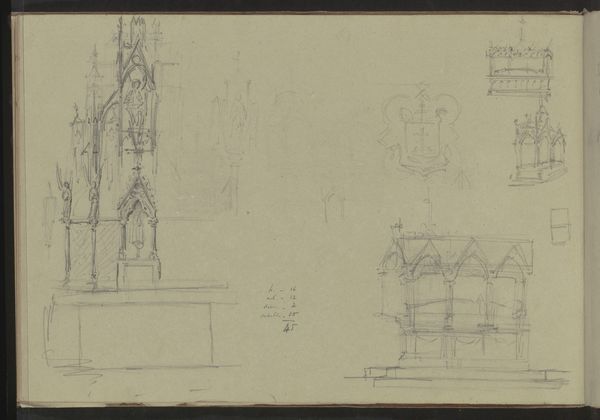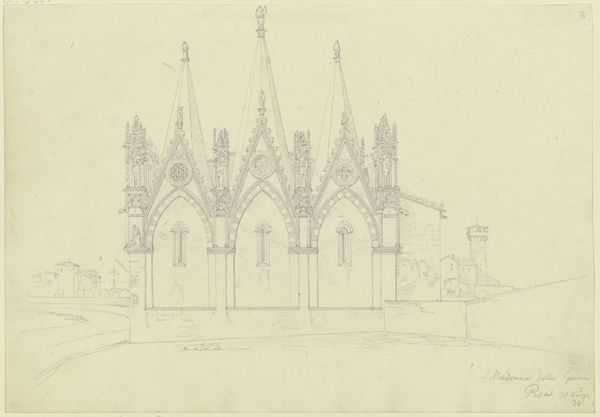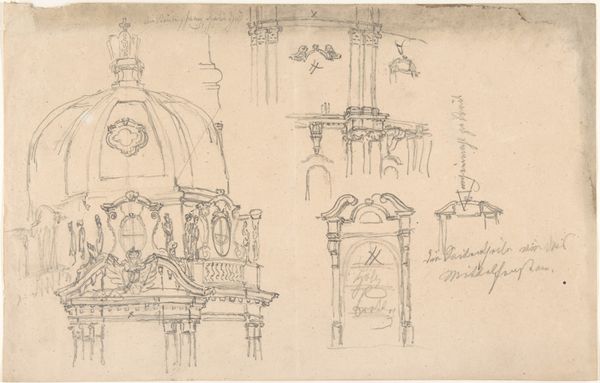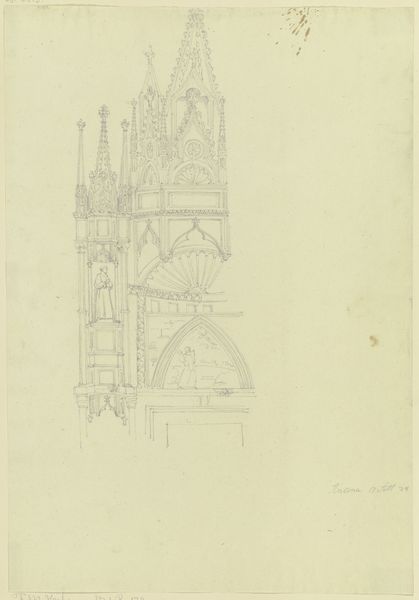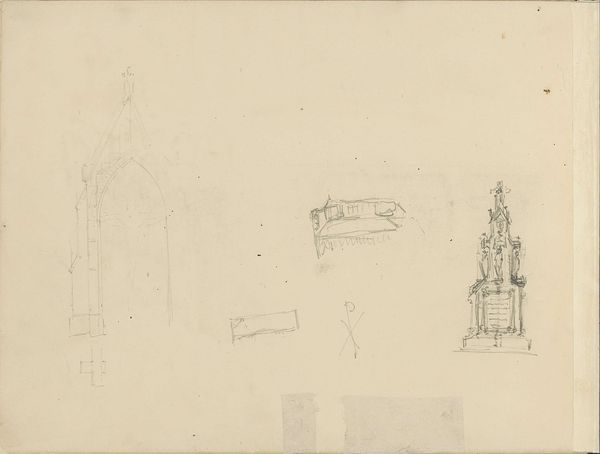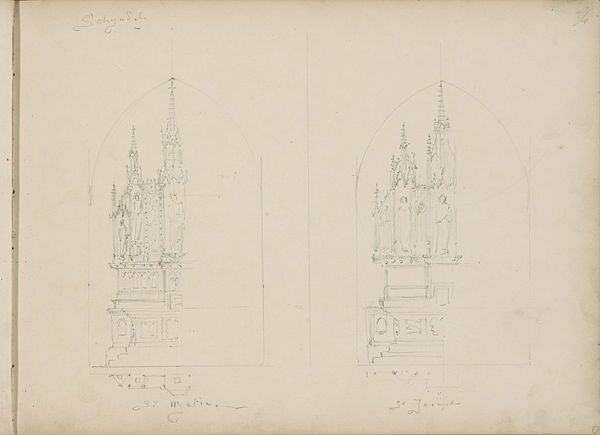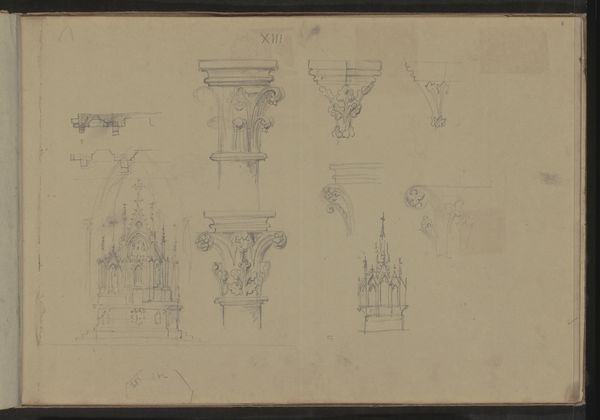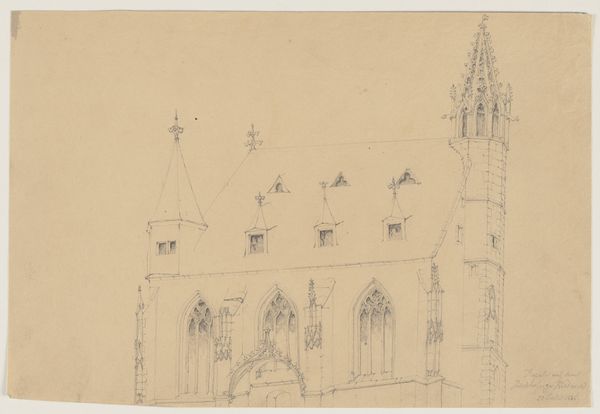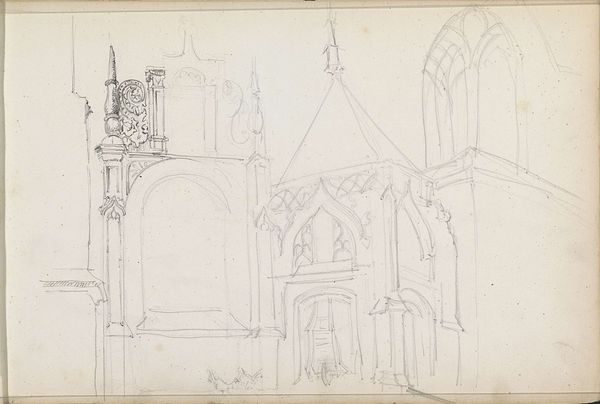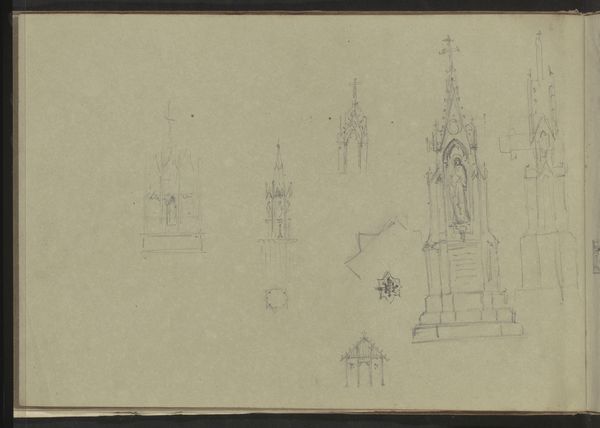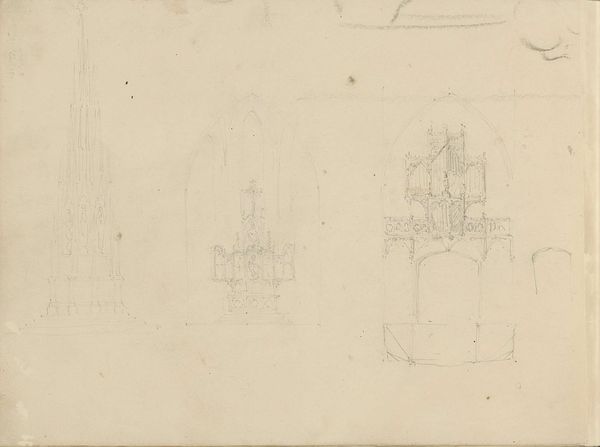
drawing, paper, pencil, architecture
#
drawing
#
medieval
#
sketch book
#
paper
#
geometric
#
sketch
#
pencil
#
line
#
architecture
Copyright: Rijks Museum: Open Domain
Editor: This is Pierre Cuypers' sketch "Altaren", dating sometime between 1837 and 1921, done in pencil on paper. It's a surprisingly sparse drawing, very faint. I get a feeling for architectural plans but almost ghost-like. How do you interpret this work? Curator: It’s interesting you say ghost-like because sketches such as this become charged sites when we think about memory and devotion. This reminds us that even in these architectural drawings, symbols are present and serve to activate the memories attached to religious spaces, rituals, and beliefs. Notice the geometry; do these shapes evoke anything for you? Editor: I see repetitive pointed arches and a lot of vertical lines going up. It makes me think of a church reaching to heaven, so Gothic architecture comes to mind. Curator: Precisely. The pointed arches, the verticality – they are visual cues deeply embedded in our cultural memory. They speak to a longing for the divine, a sense of transcendence. It's a fascinating glimpse into how architectural forms can carry a weight of religious and cultural meaning, even in the preliminary stage of a sketch. Why do you think Cuypers chose to repeat similar shapes in different sizes here? Editor: Maybe to show different iterations or phases of his design? It could also suggest a sense of rhythm, mimicking church hymns or chants. Curator: Exactly! Think about the echoing effect of chants in a large cathedral. He's tapping into a tradition, almost replicating familiar and secure elements from religious architecture. This isn't just about bricks and mortar. This is the intersection of the personal and the monumental. Editor: So even an early drawing can reveal layers of symbolism tied to a building's intended purpose and cultural context. Curator: Precisely, it holds meaning, acting as a mnemonic trigger. It underscores how symbols transcend time and space. Editor: I hadn't considered how the visual language of architecture itself encodes spiritual and historical concepts. That’s enlightening.
Comments
No comments
Be the first to comment and join the conversation on the ultimate creative platform.
